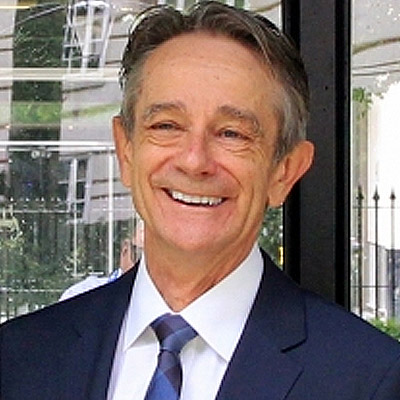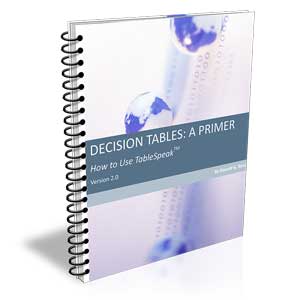Best Practices of Process Management: The Top Ten Principles (Part 10)
Years of successful and not-so-successful process management experience have led to a set of best practices -- a number of fundamental principles that must be honored in order to optimize returns to the company, the delivery of business results to customers, and to satisfy the needs of the organization's other stakeholders.
In this series, I outline the ten principles that underlie the methods of business process operation and change. In this column, I wrap up this series with a discussion of the tenth principle.
Principle 10: Business Change Is a Journey, Not a Destination
A major distinguishing feature between process management and the business process re-engineering (BPR) efforts that swept past us in the early and mid-1990s is their approaches to continuity of effort. BP management strives to uphold the notion of supporting the ongoing management of the implemented change or the ongoing implementation of change.
Two major business factors must be taken into account today: The first is that we don't have time to get everything right, so whatever we do will have to adjust as we learn in the marketplace. Secondly, whatever we do, no matter how right, will be short-lived and have to change anyway. Consequently, we must build versatile solutions and keep our eye on what is changing in order to be able to adapt in the future. This essentially means that we will never arrive at the Nirvana of stability but will always be getting there.
We must recognize that, at any point in time, our stakeholders will have a set of requirements that are in flux. The balance among these requirements will change as each of the stakeholders' contributions to us change. The ebb and flow of stakeholder and market evolution means that processes must be managed, even when they aren't undergoing radical change.
Without process stewardship, ongoing measurement, benchmarking, and constant attention to stakeholders of all types, we will fall behind through attrition. Change is required even if we simply want to maintain our current position.
Summary
If process change is a journey, it's important to pay attention all the time to all the principles that I have outlined in this series.
Notice especially that seeking perfection before action is suicide. Doing something small now and learning are more valuable than getting a bigger process right later. Whatever we do, we must be prepared to do it again better on the next go-around. Building learning feedback and knowledge distribution into processes is mandatory.
Constantly gaining tacit insight before designing is key. Designing for change is essential. Acting fast isn't a risk if we are prepared to pay attention to outcomes and adjust accordingly.
References
[1] Roger T. Burlton, "Best Practices of Process Management: The Top Ten Principles (Part 1)," Business Rules Journal, Vol. 7, No. 1 (Jan. 2006), URL: http://www.BRCommunity.com/a2006/b269.html
[2] Roger T. Burlton, "Best Practices of Process Management: The Top Ten Principles (Part 2)," Business Rules Journal, Vol. 7, No. 2 (Feb. 2006), URL: http://www.BRCommunity.com/a2006/b273.html
[3] Roger T. Burlton, "Best Practices of Process Management: The Top Ten Principles (Part 3)," Business Rules Journal, Vol. 7, No. 3 (Mar. 2006), URL: http://www.BRCommunity.com/a2006/b278.html
[4] Roger T. Burlton, "Best Practices of Process Management: The Top Ten Principles (Part 4)," Business Rules Journal, Vol. 7, No. 4 (Apr. 2006), URL: http://www.BRCommunity.com/a2006/b285.html
[5] Roger T. Burlton, "Best Practices of Process Management: The Top Ten Principles (Part 5)," Business Rules Journal, Vol. 7, No. 5 (May 2006), URL: http://www.BRCommunity.com/a2006/b291.html
[6] Roger T. Burlton, "Best Practices of Process Management: The Top Ten Principles (Part 6)," Business Rules Journal, Vol. 7, No. 6 (June 2006), URL: http://www.BRCommunity.com/a2006/b296.html
[7] Roger T. Burlton, "Best Practices of Process Management: The Top Ten Principles (Part 7)," Business Rules Journal, Vol. 7, No. 7 (July 2006), URL: http://www.BRCommunity.com/a2006/b302.html
[8] Roger T. Burlton, "Best Practices of Process Management: The Top Ten Principles (Part 8)," Business Rules Journal, Vol. 7, No. 8 (August 2006), URL: http://www.BRCommunity.com/a2006/b307.html
[9] Roger T. Burlton, "Best Practices of Process Management: The Top Ten Principles (Part 9)," Business Rules Journal, Vol. 7, No. 9 (Sept. 2006), URL: http://www.BRCommunity.com/a2006/b311.html
# # #
About our Contributor:
Online Interactive Training Series
In response to a great many requests, Business Rule Solutions now offers at-a-distance learning options. No travel, no backlogs, no hassles. Same great instructors, but with schedules, content and pricing designed to meet the special needs of busy professionals.












How to Define Business Terms in Plain English: A Primer
How to Use DecisionSpeak™ and Question Charts (Q-Charts™)
Decision Tables - A Primer: How to Use TableSpeak™
Tabulation of Lists in RuleSpeak®: A Primer - Using "The Following" Clause
Business Agility Manifesto
Business Rules Manifesto
Business Motivation Model
Decision Vocabulary
[Download]
[Download]
Semantics of Business Vocabulary and Business Rules